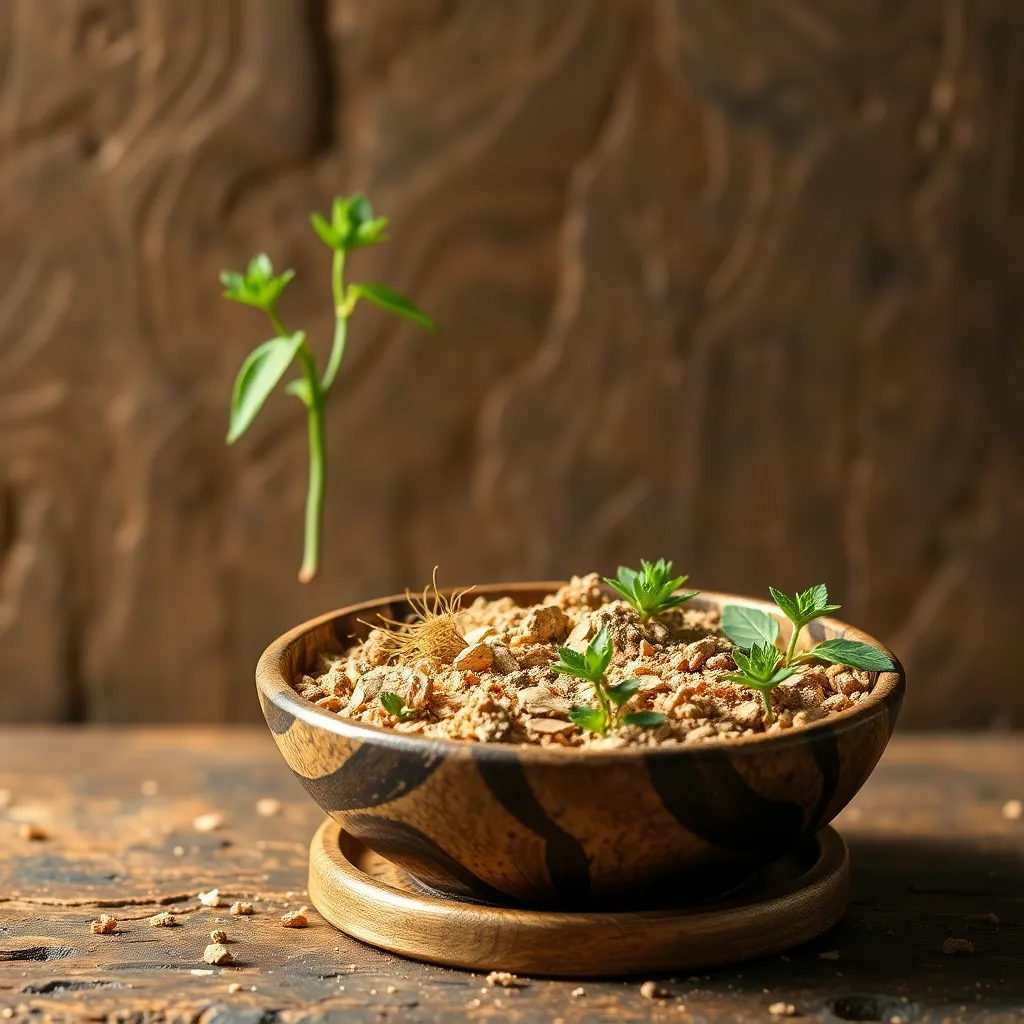The Role of Sacred Herbs in Egyptian Spiritual Practices
I. Introduction
Egyptian spirituality is a rich tapestry woven from the beliefs, practices, and traditions of ancient Egyptians. It encompasses a deep connection to nature and the divine, reflecting their understanding of the world around them. Nature played a pivotal role in these spiritual beliefs, as it was viewed as an extension of the divine realm.
Among the various elements of nature, sacred herbs held a special significance in Egyptian spiritual practices. These herbs were not merely plants; they were considered powerful tools for communication with the divine, healing, and ritualistic purposes. This article delves into the historical context, major sacred herbs, their ritualistic uses, and their influence on modern spirituality.
II. Historical Context of Sacred Herbs in Ancient Egypt
Archaeological findings and historical texts reveal a profound understanding of the natural world by the ancient Egyptians. Evidence of herbal use can be found in tombs, temples, and papyrus scrolls, indicating that herbs played a significant role in both daily life and spiritual practices.
The significance of herbs in Ancient Egyptian society extended beyond mere culinary uses. They were intertwined with medicine, spirituality, and daily rituals. Cultural beliefs surrounding the use of herbs included notions of protection, healing, and the facilitation of communication with the gods. The Egyptians believed that certain herbs had the power to invoke divine favor and provide assistance in the afterlife.
III. Major Sacred Herbs in Egyptian Spirituality
A. Lotus (Nymphaea)
The lotus flower is perhaps the most iconic symbol in Egyptian spirituality. It represents purity, rebirth, and the cycle of life, as it emerges from the muddy waters each morning, blooming in the sunlight.
- Symbolism and significance: The lotus is associated with creation and the sun god Ra. It symbolizes the soul’s journey and its ability to rise above challenges.
- Uses in rituals and offerings: The lotus was often used in temple offerings and ceremonies to honor the gods. It was believed to possess protective qualities, making it a common element in funerary practices.
B. Frankincense (Boswellia)
Frankincense is a resin that has been valued for centuries for its aromatic properties. In ancient Egypt, it was used extensively in religious rituals and ceremonies.
- Role in incense and purification: Frankincense was burned as incense to purify spaces and create a sacred atmosphere during rituals. Its smoke was believed to carry prayers to the heavens.
- Connections to deities: This herb was closely associated with deities such as Ra and Amun, who were honored with frankincense offerings in temples.
C. Myrrh (Commiphora myrrha)
Myrrh, another highly valued resin, played a crucial role in ancient Egyptian funerary practices and was often used in the embalming process.
- Uses in embalming and funerary practices: Myrrh was essential for preserving the bodies of the deceased, as it helped prevent decay and was believed to facilitate the soul’s transition to the afterlife.
- Symbolic meanings associated with death and rebirth: Myrrh is associated with mortality and the afterlife, representing the cycle of death and rebirth in Egyptian belief systems.
IV. The Ritualistic Use of Herbs
The preparation and consecration of herbs were vital aspects of their ritualistic use in ancient Egypt. Priests often performed specific rites to bless and sanctify the herbs before they were used in ceremonies.
Methods of application varied, including:
- Burning: Herbs like frankincense and myrrh were burned to release their aromatic properties during rituals.
- Anointing: Oils infused with sacred herbs were used to anoint individuals, objects, and altars, symbolizing purification and blessing.
Specific rituals that prominently featured herbs included:
- Daily offerings to the gods in temples.
- Funerary rites, where herbs were used to honor and protect the deceased.
V. Herbal Medicine and Spiritual Healing
In ancient Egypt, the integration of spiritual and physical healing was a commonplace practice. Herbal medicine was often viewed through a spiritual lens, where the physical properties of the herbs were believed to be enhanced by their spiritual significance.
Examples of herbs used for medicinal purposes included:
- Garlic: Used for its health benefits and believed to ward off evil spirits.
- Willow: Used for its analgesic properties, linked to the goddess Isis, known for her healing powers.
The spiritual beliefs surrounding healing practices emphasized the connection between the body, mind, and spirit, showcasing a holistic approach to health and wellness.
VI. The Influence of Sacred Herbs on Modern Spiritual Practices
Many ancient practices related to sacred herbs continue to influence contemporary spirituality. Modern practitioners of various spiritual paths often incorporate these herbs into their rituals and healing practices.
Adaptation and reinterpretation of sacred herbs can be seen in:
- Use of lotus and frankincense in meditation and mindfulness practices.
- Holistic wellness practices that draw from ancient Egyptian herbal medicine.
The impact on wellness and holistic practices today is evident as more individuals seek natural remedies and spiritual connections through the use of sacred herbs.
VII. Challenges and Considerations
While the interest in sacred herbs continues to grow, there are challenges and considerations to be aware of:
- Conservation and ethical sourcing: The demand for sacred herbs can lead to overharvesting and environmental degradation.
- Misinterpretation of ancient practices: Modern interpretations may not accurately reflect the original cultural contexts, leading to dilution of their significance.
- Respecting cultural heritage: It is crucial to honor the traditions and beliefs of the ancient Egyptians when engaging with their spiritual practices.
VIII. Conclusion
The significance of sacred herbs in Egyptian spirituality cannot be overstated. They served as vital tools in rituals, healing practices, and communication with the divine. The enduring legacy of these practices demonstrates the profound relationship between nature and spirituality that ancient Egyptians understood.
As we reflect on these traditions, it is essential to honor and preserve the cultural heritage associated with sacred herbs. By respecting and learning from the past, we can continue to appreciate the wisdom of ancient Egyptian spirituality and its relevance in our contemporary lives.




